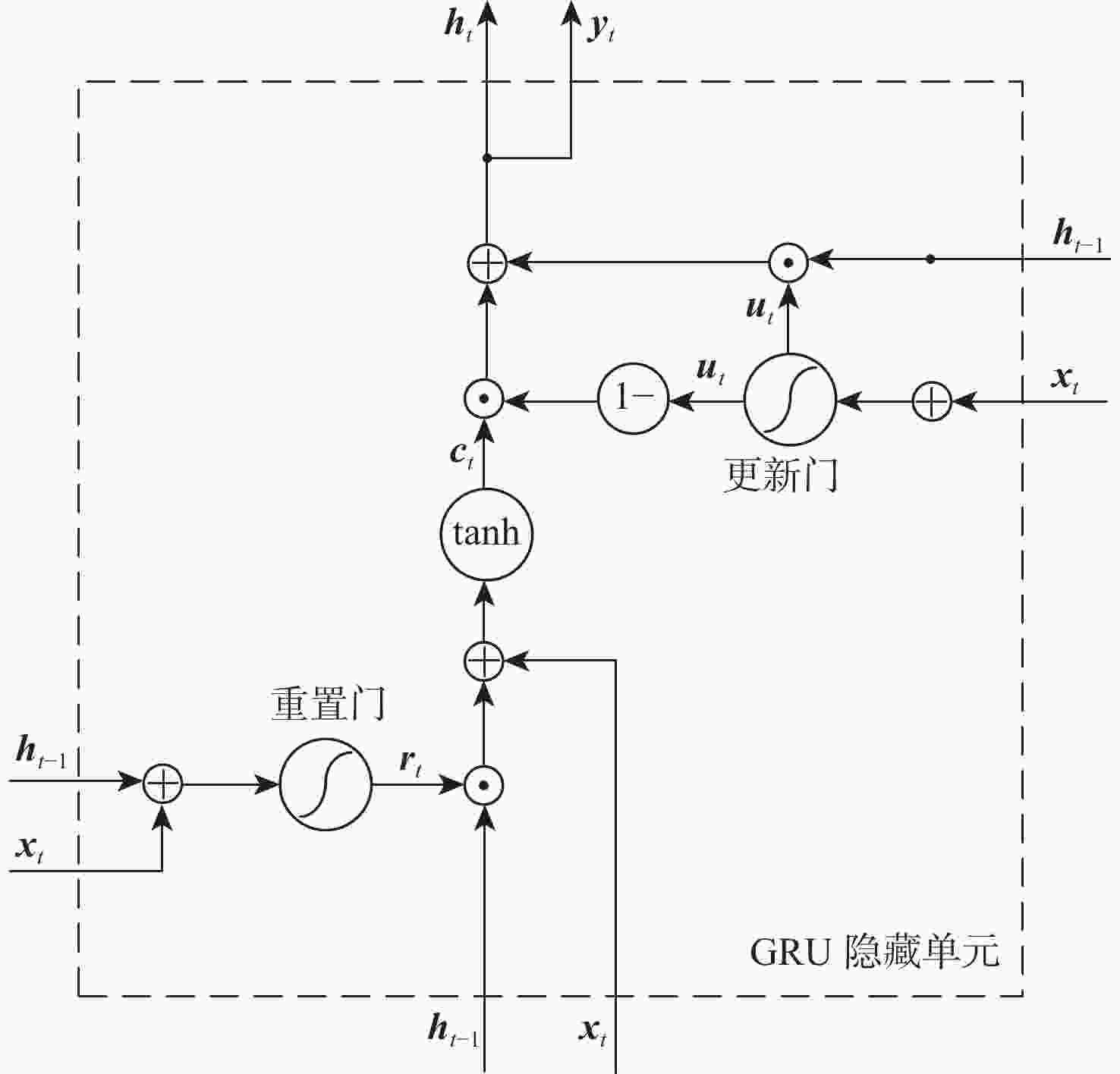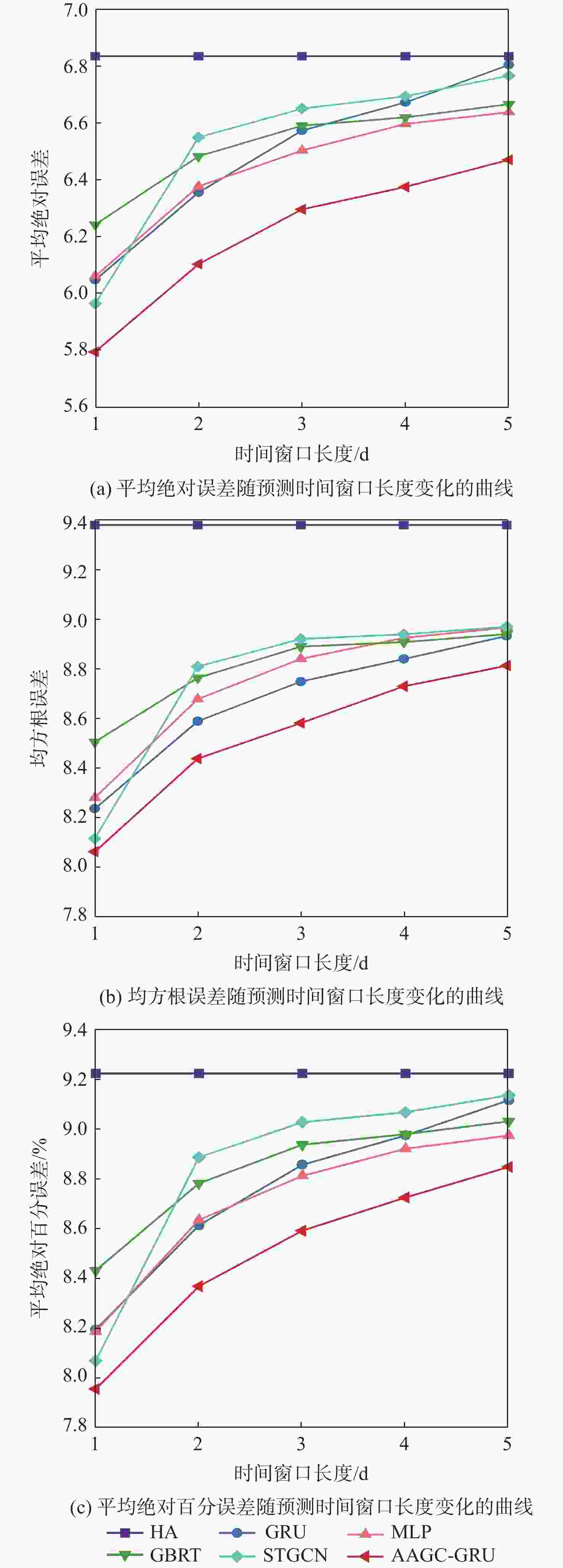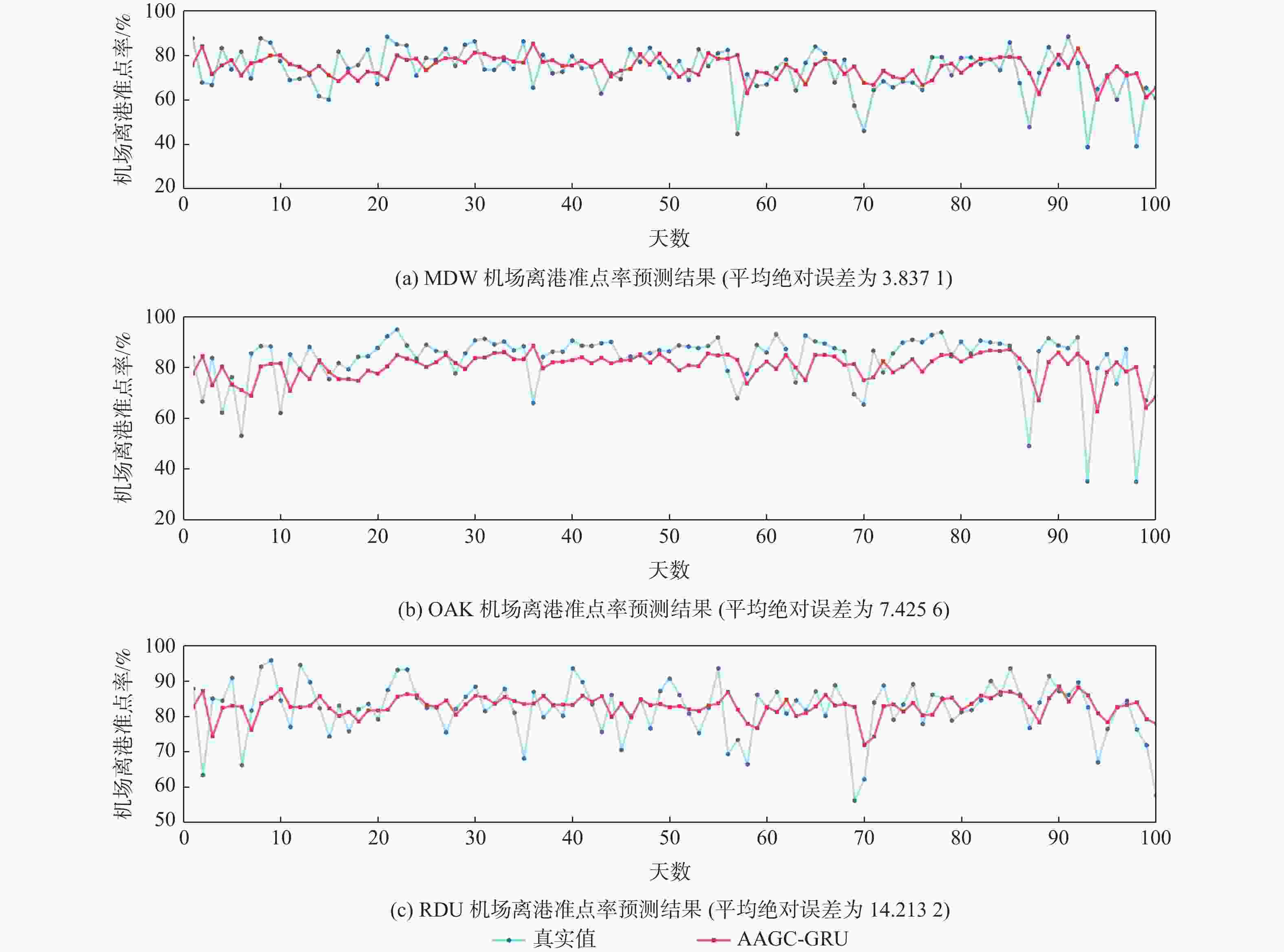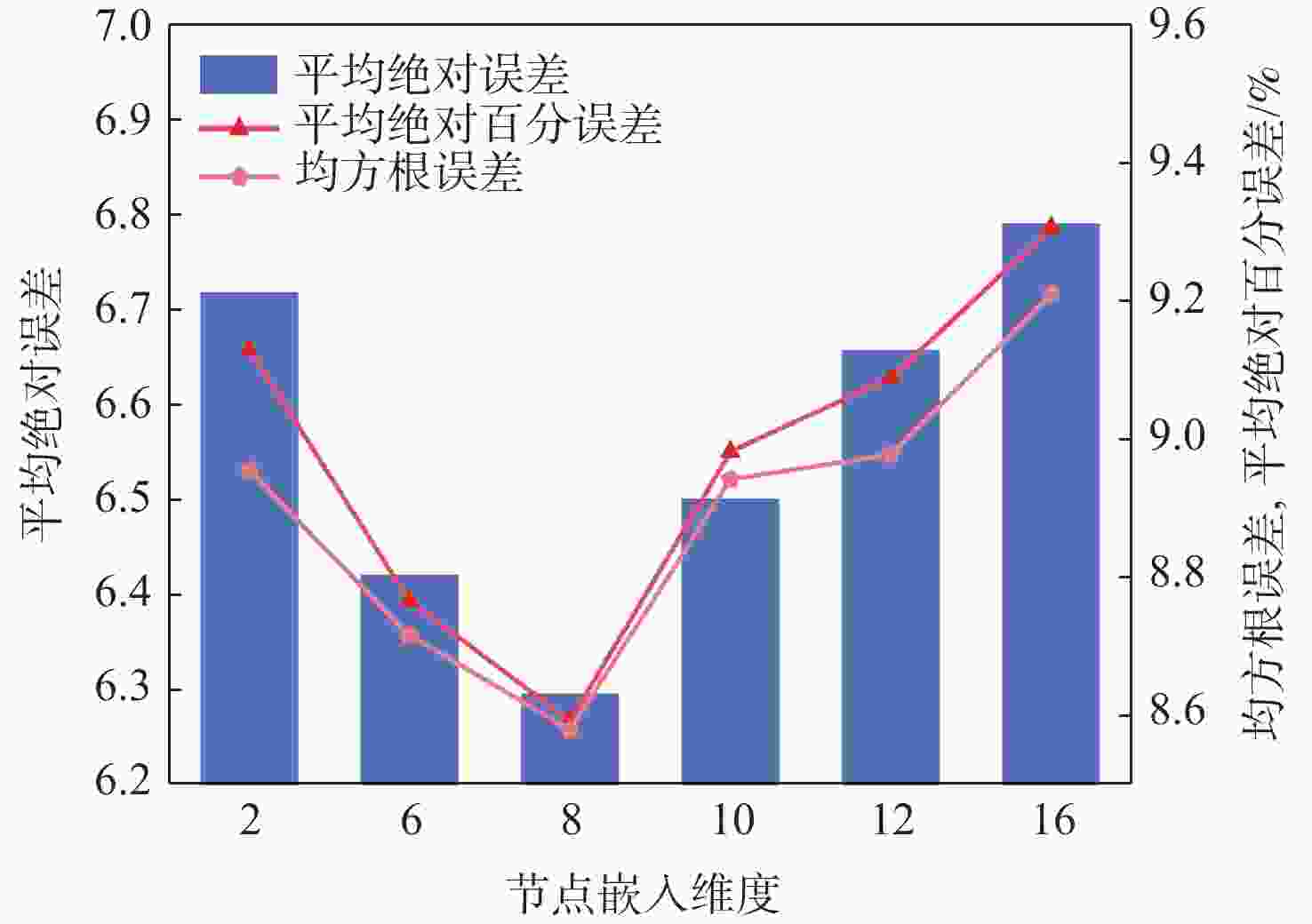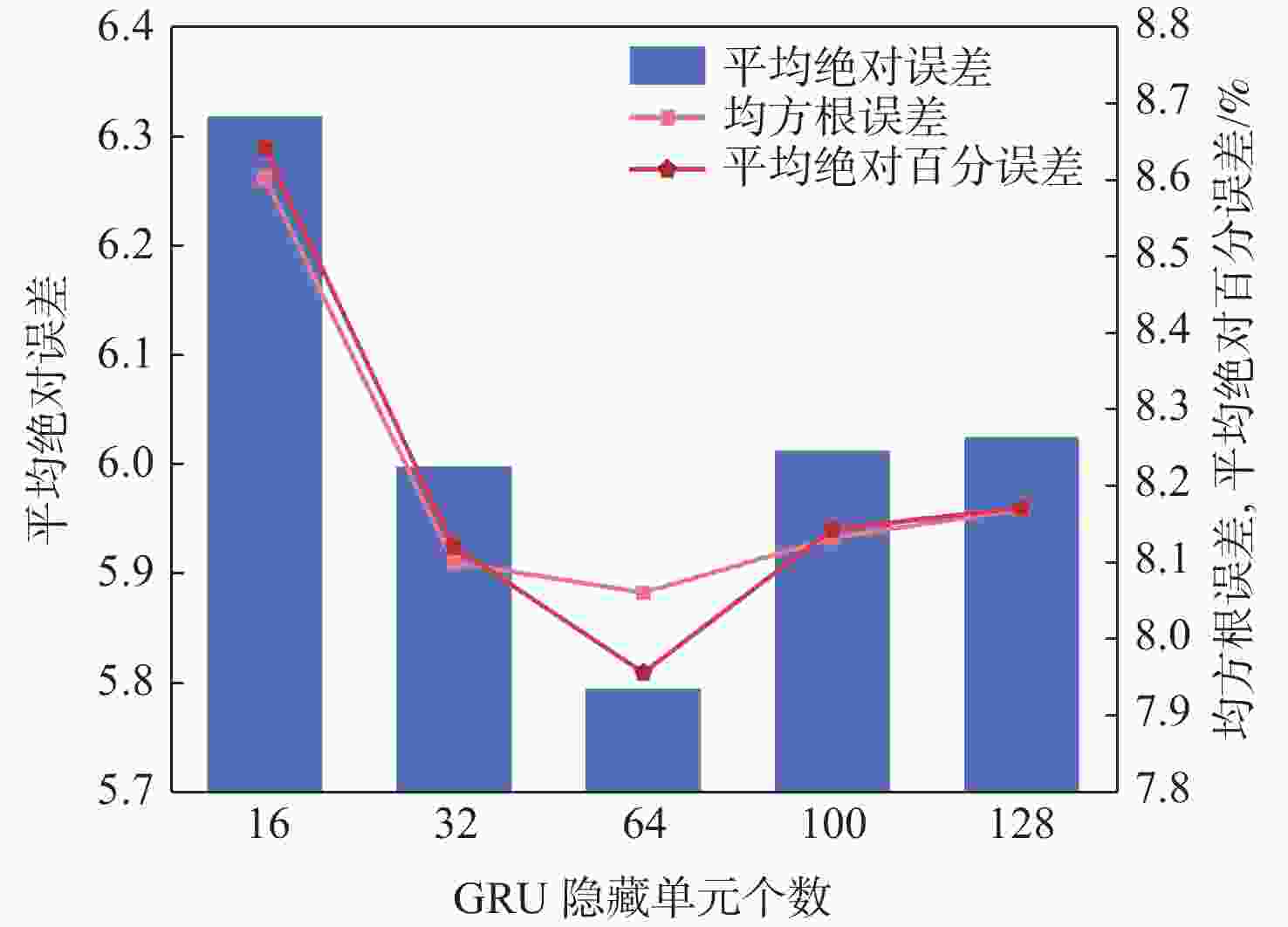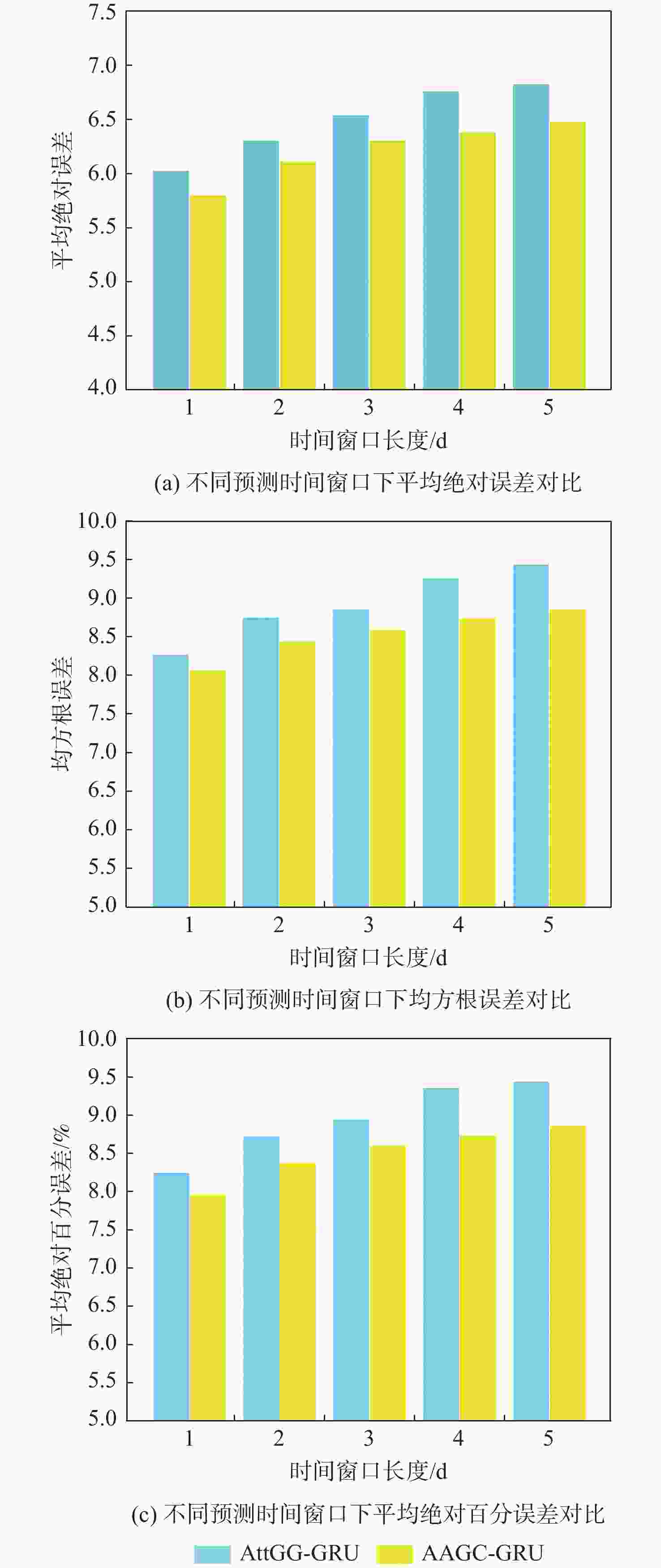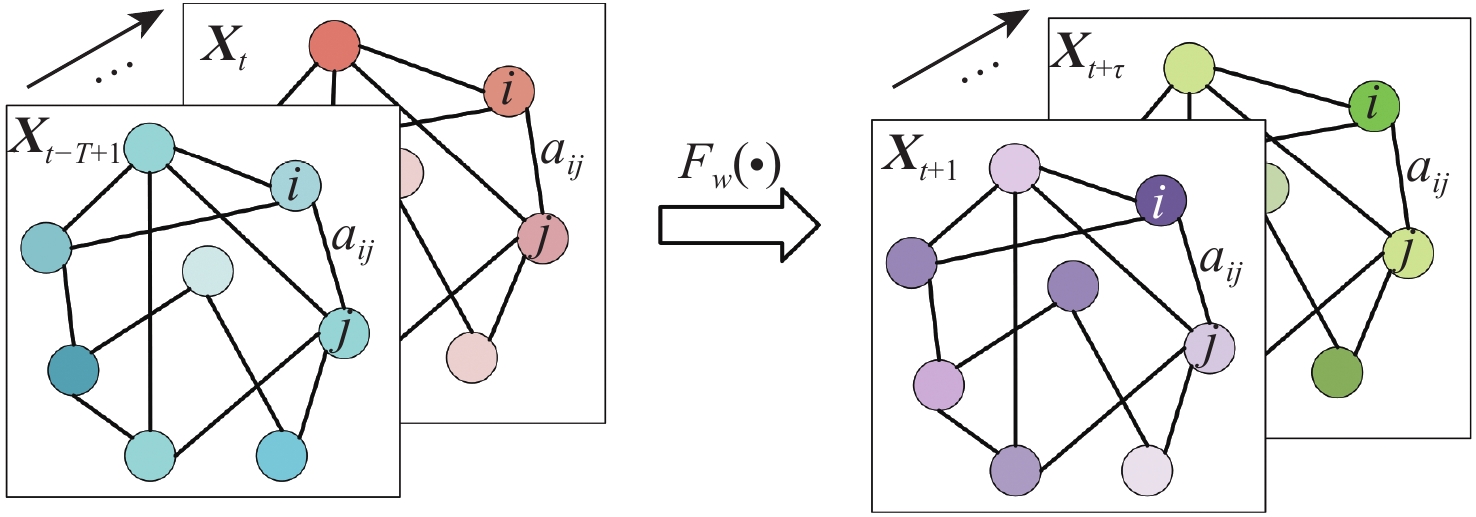Combined prediction method of flight delay based on attention-based adaptive graph convolution-gated recurrent unit
-
摘要:
针对航班延误预测模型中延误数据的时空动态相关性难以提取的问题,提出一种基于自适应注意力图卷积门控循环单元(AAGC-GRU)的航班延误预测模型。以机场为节点构建机场网络拓扑图,结合空间注意力机制及自适应图卷积神经网络,弥补图卷积神经网络对先验知识过度依赖的缺陷,同时增强模型对机场网络空间动态相关性的自动挖掘能力;采用门控循环单元获取航班延误数据的时间相关性,并引入时间注意力机制来学习不同时间步数据的影响权重;采用全连接层获取航班延误预测结果。利用美国大型机场网络的航班离港准点率数据集进行实验,结果表明:所提AAGC-GRU模型的预测结果在平均绝对误差、均方根误差和平均绝对百分误差方面均优于梯度提升回归树、门控循环单元及时空图卷积神经网络等基线模型。
Abstract:Aiming at the problem of the difficult extraction of spatio-temporal dynamic correlation of flight delay data in a flight delay prediction model, a type of flight delay prediction model based on an attention-based adaptive graph convolution-gated recurrent unit (AAGC-GRU) is proposed. Firstly, the airport network topology graph is constructed with the airport as the node. When combined with the spatial attention mechanism and adaptive graph convolution, it improves the model’s autonomous mining of the spatial dynamic correlation of the airport network and compensates for the over-reliance of graph convolution on prior knowledge. Secondly, GRU was used to obtain the temporal dependence of historical flight delay data, and the time attention mechanism was introduced to automatically allocate the influence weight of data at different time steps, so as to fully capture the impact degree of data at different moments. Then, the fully connected layer is used to obtain the flight delay prediction results. Finally, the experiments are conducted on the on-time departure rate dataset of the American large airport network. In terms of mean absolute error, root mean square error, and mean absolute percentage error, the AAGC-GRU model outperforms the gradient boosting regression tree, gated recurrent unit model, spatio-temporal graph convolutional neural network, and other baseline models.
-
表 1 时空注意力机制模块的有效性实验结果
Table 1. Effectiveness experiment result of spatial and temporal attention mechanism module
时间窗口/d 模型 均方根
误差平均绝
对误差平均绝对
百分误差/%1 SAttGC-GRU 8.1217 5.9413 8.0927 TAttGC-GRU 8.1249 5.9314 8.0680 AAGC-GRU 8.0621 5.7950 7.9578 2 SAttGC-GRU 8.4621 6.2292 8.4614 TAttGC-GRU 8.4871 6.1973 8.4793 AAGC-GRU 8.4373 6.1036 8.3697 3 SAttGC-GRU 8.6604 6.3564 8.6842 TAttGC-GRU 8.7031 6.4256 8.7536 AAGC-GRU 8.5806 6.2961 8.5932 4 SAttGC-GRU 8.8000 6.6086 8.9517 TAttGC-GRU 8.7476 6.4736 8.8175 AAGC-GRU 8.7290 6.3746 8.7264 5 SAttGC-GRU 8.8624 6.6833 9.0345 TAttGC-GRU 8.8779 6.5631 8.9543 AAGC-GRU 8.8123 6.4701 8.8491 注:SAttGC-GRU为AAGC-GRU去除时间注意力机制模块后的模型,TAttGC-GRU为AAGC-GRU去除空间注意力机制模块后的模型。 表 2 不同模型的时空复杂度对比分析
Table 2. Comparative analysis of spatial-temporal complexity of different models
模型 浮点运算量/FLOPs 参数量 SAttGC-GRU 2822461 27408 TAttGC-GRU 2822479 27395 AAGC-GRU 2822591 27411 表 3 不同模型的预测结果
Table 3. Prediction results of different models
模型 平均绝对误差 均方根误差 平均绝对百分误差/% HA 6.4129 8.6803 8.4935 GRU 6.0870 8.2088 8.0911 MLP 6.1271 8.2591 8.0938 GBRT 6.2830 8.4737 8.3154 STGCN 5.9704 8.0831 7.9403 AAGC-GRU 5.8787 7.9217 7.8150 -
[1] BRITTO R, DRESNER M, VOLTES A. The impact of flight delays on passenger demand and societal welfare[J]. Transportation Research Part E: Logistics and Transportation Review, 2012, 48(2): 460-469. doi: 10.1016/j.tre.2011.10.009 [2] PEJOVIC T, NOLAND R B, WILLIAMS V, et al. A tentative analysis of the impacts of an airport closure[J]. Journal of Air Transport Management, 2009, 15(5): 241-248. doi: 10.1016/j.jairtraman.2009.02.004 [3] RYERSON M S, HANSEN M, BONN J. Time to burn: Flight delay, terminal efficiency, and fuel consumption in the National Airspace System[J]. Transportation Research Part A: Policy and Practice, 2014, 69: 286-298. doi: 10.1016/j.tra.2014.08.024 [4] SIMIĆ T K, BABIĆ O. Airport traffic complexity and environment efficiency metrics for evaluation of ATM measures[J]. Journal of Air Transport Management, 2015, 42: 260-271. doi: 10.1016/j.jairtraman.2014.11.008 [5] BASPINAR B, KOYUNCU E. A data-driven air transportation delay propagation model using epidemic process models[J]. International Journal of Aerospace Engineering, 2016, 2016: 4836260. [6] 王春政, 胡明华, 杨磊, 等. 基于Agent模型的机场网络延误预测[J]. 航空学报, 2021, 42(7): 452-465.WANG C Z, HU M H, YANG L, et al. Airport network delay prediction based on Agent model[J]. Acta Aeronautica et Astronautica Sinica, 2021, 42(7): 452-465(in Chinese). [7] 罗赟骞, 陈志杰, 汤锦辉, 等. 采用支持向量机回归的航班延误预测研究[J]. 交通运输系统工程与信息, 2015, 15(1): 143-149. doi: 10.3969/j.issn.1009-6744.2015.01.025LUO Y Q, CHEN Z J, TANG J H, et al. Flight delay prediction using support vector machine regression[J]. Journal of Transportation Systems Engineering and Information Technology, 2015, 15(1): 143-149(in Chinese). doi: 10.3969/j.issn.1009-6744.2015.01.025 [8] REBOLLO J J, BALAKRISHNAN H. Characterization and prediction of air traffic delays[J]. Transportation Research Part C: Emerging Technologies, 2014, 44: 231-241. doi: 10.1016/j.trc.2014.04.007 [9] CHAKRABARTY N, KUNDU T, DANDAPAT S, et al. Flight arrival delay prediction using gradient boosting classifier[C]//Proceedings of the Emerging Technologies in Data Mining and Information Security . Berlin: Springer, 2018: 651-659. [10] YU B, GUO Z, ASIAN S, et al. Flight delay prediction for commercial air transport: A deep learning approach[J]. Transportation Research Part E: Logistics and Transportation Review, 2019, 125: 203-221. doi: 10.1016/j.tre.2019.03.013 [11] GUI G, LIU F, SUN J L, et al. Flight delay prediction based on aviation big data and machine learning[J]. IEEE Transactions on Vehicular Technology, 2020, 69(1): 140-150. doi: 10.1109/TVT.2019.2954094 [12] QU J Y, ZHAO T, YE M, et al. Flight delay prediction using deep convolutional neural network based on fusion of meteorological data[J]. Neural Processing Letters, 2020, 52(2): 1461-1484. doi: 10.1007/s11063-020-10318-4 [13] LI Z, YE L, ZHAO Y N, et al. A spatiotemporal directed graph convolution network for ultra-short-term wind power prediction[J]. IEEE Transactions on Sustainable Energy, 2023, 14(1): 39-54. doi: 10.1109/TSTE.2022.3198816 [14] 姜雨, 陈名扬, 袁琪, 等. 基于时空图卷积神经网络的离港航班延误预测[J]. 北京亚洲成人在线一二三四五六区学报, 2023, 49(5): 1044-1052.JIANG Y, CHEN M Y, YUAN Q, et al. Departure flight delay prediction based on spatio-temporal graph convolutional networks[J]. Journal of Beijing University of Aeronautics and Astronautics, 2023, 49(5): 1044-1052(in Chinese). [15] ZENG W L, LI J, QUAN Z B, et al. A deep graph-embedded LSTM neural network approach for airport delay prediction[J]. Journal of Advanced Transportation, 2021, 2021: 6638130. [16] BAO J, YANG Z, ZENG W L. Graph to sequence learning with attention mechanism for network-wide multi-step-ahead flight delay prediction[J]. Transportation Research Part C: Emerging Technologies, 2021, 130: 103323. doi: 10.1016/j.trc.2021.103323 [17] BRUNA J, ZAREMBA W, SZLAM A, et al. Spectral networks and locally connected networks on graphs[EB/OL]. (2014-05-21)[2022-12-01]. http://arxiv.org/abs/1312.6203. [18] DEFFERRARD M, BRESSON X, VANDERGHEYNST P. Convolutional neural networks on graphs with fast localized spectral filtering[EB/OL]. (2017-02-05)[2022-12-01]. http://arxiv. org/abs/1606.09375v2. [19] KIPF T N, WELLING M. Semi-supervised classification with graph convolutional networks[EB/OL]. (2017-02-22)[2022-12-01]. http://arxiv.org/abs/1609.02907. [20] 申翔翔, 侯新文, 尹传环. 深度强化学习中状态注意力机制的研究[J]. 智能系统学报, 2020, 15(2): 317-322. doi: 10.11992/tis.201809033SHEN X X, HOU X W, YIN C H. State attention in deep reinforcement learning[J]. CAAI Transactions on Intelligent Systems, 2020, 15(2): 317-322(in Chinese). doi: 10.11992/tis.201809033 [21] BAHDANAU D, CHO K, BENGIO Y. Neural machine translation by jointly learning to align and translate[EB/OL]. (2016-05-19)[2022-12-01]. http://arxiv.org/abs/1409.0473v5. [22] CHUNG J, GULCEHRE C, CHO K, et al. Empirical evaluation of gated recurrent neural networks on sequence modeling[EB/OL]. (2014-11-11)[2022-12-01]. http://arxiv.org/abs/1412.3555. [23] XIA Y, CHEN J G. Traffic flow forecasting method based on gradient boosting decision tree[C]//Proceedings of the 5th International Conference on Frontiers of Manufacturing Science and Measuring Technology. Paris: Atlantis Press, 2017: 436-439. -






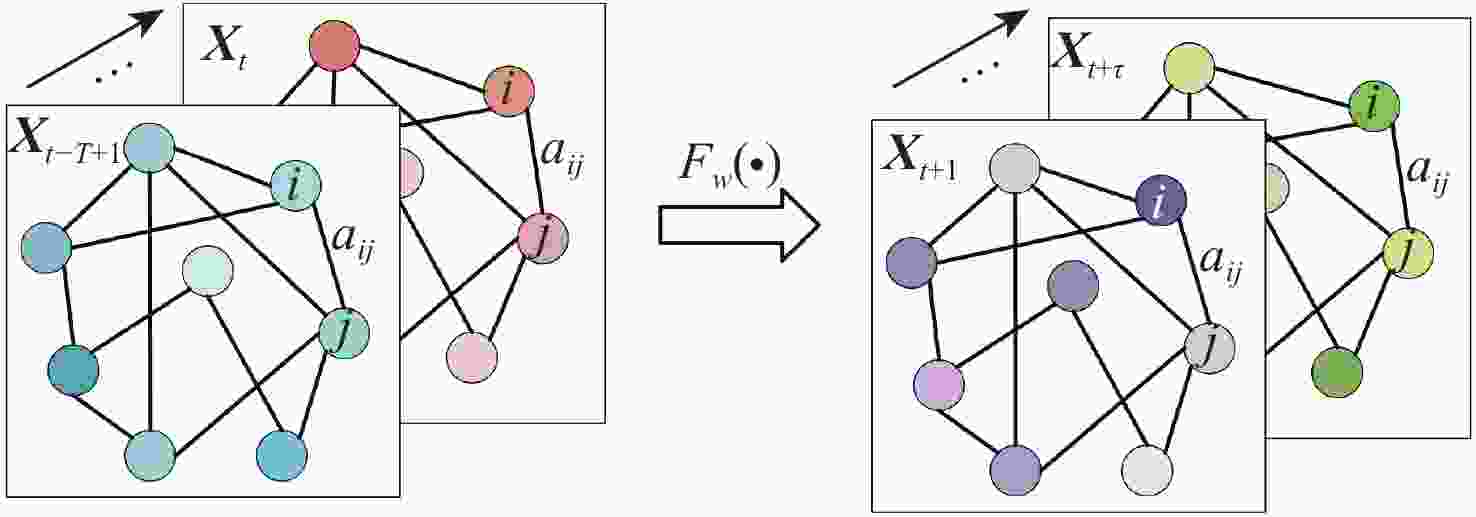
 下载:
下载:


